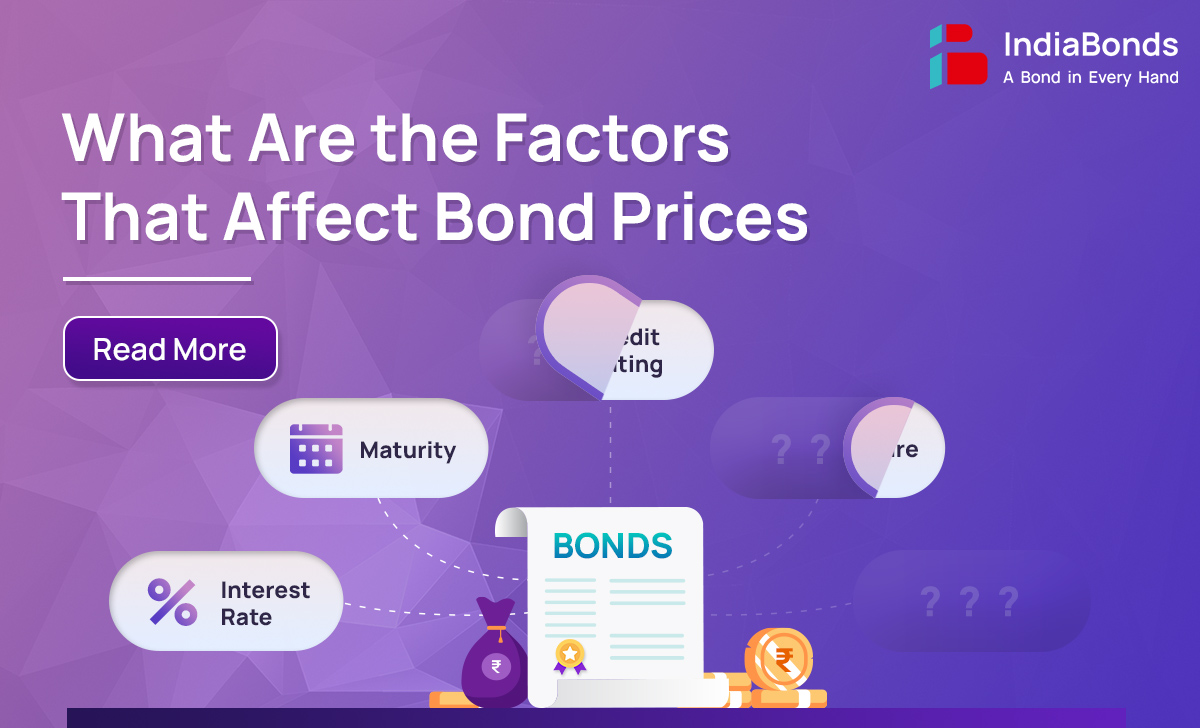
A bond can be viewed as a debt security issued by a company or governments to finance their capital expenditures and fund growth projects. Simply put, it is a form of loan taken by corporations or governments.
Bonds usually offer regular and fixed returns, which make them one of the most stable investment options in the market.
New investors often have a limited understanding of bonds as there is very little information available about bond prices and their performance. However, this is changing now due to Online Bond Investment Platform Providers (OBPP) like IndiaBonds who provide a host of bond information, educational material and simplified investing in bonds through technological ease. This article overviews the factors that affect the bond valuation in the market.
Bond pricing conventions should be understood by investors. Bonds do not trade the same way as stocks. Compared to watching a stock or mutual fund change in value, the pricing mechanisms that drive movements in the bond market don’t seem as obvious. This is due to the fact that shares /stock are traded based on their predicted future value (based on potential earnings growth).
Each bond has a par value; depending on the market, it may trade at par, above par, or below par. A bond’s interest payment is a set amount. However, if the bond’s price changes, so does its bond yield, which is the annual interest compared to the current market price.




The market value of bonds isn’t important for primary investors who plan to hold them until maturity since they will receive regular interest and then the principal at maturity. The market value is important for those investors who wish to buy and sell securities in secondary market.
Here are some factors that influence bond prices:
An inverse relationship exists between bond valuation and the interest rate prevalent in the market. For a bond, the net present value is calculated using the prevailing market interest rate as the discount rate.
A bond’s value falls when its discount rate rises, the market interest rate increases, and the discount rate on cash flow increases.
On the other hand, when the bond interest rate drops, the value of bonds rise as the corresponding future cash flows are discounted. This translates into a higher value of the bond.
Prices on long-term bonds, which have extended maturity date, are more likely to fluctuate based on the interest rates. As the interest rate rises, bond valuations decline faster for bonds with longer maturities than for bonds with short maturities. This is also known as bond duration factor.
The bond credit rating determines an issuer’s credit risk profile. This is provided by agencies such as Crisil, Care, Icra and are prescribed as AAA, AA, A in declining order of financial strength.
An issuer with a high credit rating will usually be able to service the bond’s coupon payments and principal repayments promptly.
The lower the credit ratings, the higher the yields. That is why investors are more willing to invest in bonds with low ratings.
When a bond’s credit rating changes, its price can also change. A low credit rating will decrease a bond’s value, and increased yields will increase its profit. Conversely, a high credit rating will improve the bond’s value and lower its yield.
Hence it is essential that investors do their due diligence on the issuer before investing in bonds and understand its financial strength.
The price of bond can depend on various factors in the structure of the bond. For example, a floating rate coupon bond does not fluctuate with interest rates as much as a fixed coupon rate bond.
Also, Call and Put Options can change the pricing of bond as it determines maturity. Call Option is when the issuer has the right to redeem a bond before its final maturity and a Put Option is one where the bondholder can demand repayment before maturity.
Broad market conditions can affect bond prices. It is common for investors to move their money out of bonds and into equities when stock prices are rising and country’s economy is growing in a healthy state.
However, when there is a correction or slump in equity markets, investors get risk averse and rush to the relative safety of bonds causing their prices to rise.
In general, bond prices tend to decline during periods of inflation. This is because investors demand more returns to hold these securities to compensate for inflation. On the other hand, bond prices tend to rise during periods of decreasing inflation.
To save and grow your wealth steadily, you must invest in the right portfolio. Investing in bonds can stabilise your portfolio’s performance as it generates interest income. To make the best of your investments in bonds, understand the factors that affect bond values and pick your options carefully.
The price of a bond is the sum of present value of all future cash flows of the bond. The interest rate used for discounting the cash flows is the Yield to Maturity (YTM). Use IndiaBonds Online Bond Calculator to accurately calculate the price or Yield of the bond in seconds as well as get detailed breakup of principal, accrued interest and total settlement amounts. Simply signup to start using.
Bond yield and bond price are inversely proportional. As the price increases, the yield decreases and vice-versa. The change in bond yield affects the bond price and vice versa. If the bond yield rises, the price has to decrease in order to balance the interest rates.
Disclaimer: Investments in debt securities/ municipal debt securities/ securitised debt instruments are subject to risks including delay and/ or default in payment. Read all the offer related documents carefully.